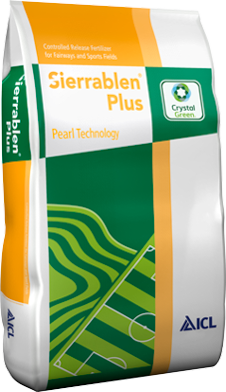Root Development Strategies: Optimising Sand-Based and Soil-Based Pitches
The article covers root development strategies for sand-based and soil-based pitches, offering practical tips to enhance resilience, playability, and longevity.
On this page:
Root development is one of the cornerstones of all high-performing football and winter sports pitches, regardless of the standard of play.
Whether it’s a meticulously maintained sand-based stadium pitch or a soil-based grassroots facility, strong rooting is vital to ensure resilience, playability, and durability.
While management strategies differ depending on pitch type, the fundamental principles of optimising rooting remain consistent.
This article highlights the contrasting approaches required for each surface and provides practical advice to enhance root development and overall pitch performance.
Sand-Based Pitches
Sand-based pitches are engineered for drainage and playability, but their low water and nutrient retention present unique challenges. Maximising root development requires a tailored approach to irrigation, nutrition, aeration, and stress management.
Mowing Height
Mowing height has a direct impact on root development—lower cutting heights restrict photosynthesis and result in shallower rooting.
Grounds staff should ideally maintain a consistent height of cut between 24-27mm to balance root health and playability, ensuring sufficient leaf area to support rooting while maintaining the required surface performance.
Water Management
Sand-based pitches require precise irrigation to maintain consistent moisture levels. Overwatering encourages shallow rooting, while under-watering leads to drought stress.
Wetting agents, such as Qualibra, help retain moisture deeper in the rootzone and ensure uniform distribution, encouraging deeper rooting.
After seeding and initial germination, deep, infrequent irrigation should be scheduled to encourage roots to chase moisture deeper into the profile. Maintaining volumetric moisture content (VMC) between 10-15% is optimal for rooting outside of fixtures, while higher VMC may be needed for stability and playability.
Nutrition
Nutrients are prone to leaching from sand-based systems, particularly nitrogen and potassium. Selecting the right pre-seed fertiliser is critical for both quick establishment and long-term pitch performance.
Sierrablen Plus Renovator 20-20-8 has been shown to improve root depth and nutrient efficiency, making it an excellent choice for these pitches.
The use of recycled phosphorus, such as struvite in Sierrablen Plus Pearl 11-11-5, offers both performance and environmental benefits, with studies showing it can double root mass when incorporated to a depth of 6cm.
Compaction and Aeration
While compaction is less of a concern in sand-based systems, regular aeration is essential to maintain oxygen flow to the roots.
Grounds teams should aim for deeper aeration (10–15cm) rather than shallow surface tining (5–7cm), which has limited impact on deep root development. Deep spiking or slit-tining during renovation and in-season aeration are crucial to sustaining deep rooting.
Stress Management
Sand-based pitches, particularly in stadium settings, are more vulnerable to heat and drought stress due to their low moisture-holding capacity and lack of airflow, which can cause higher temperatures.
Biostimulants like Vitalnova Blade and SMX, which improve root mass and stimulate root elongation, can help mitigate these stresses by enhancing root resilience and nutrient uptake.
Lighting rigs may also be necessary in shaded stadium environments to maintain growth and recovery, though care must be taken to prevent excessive heat or light stress.
Soil-Based Pitches
Soil-based pitches, typically found at community or grassroots levels, present unique challenges due to their higher moisture retention and compaction tendencies. A different management approach is required to support rooting in these conditions.
Mowing Height
Although soil-based pitches retain more moisture, shallow rooting can still be an issue. Maintaining a consistent mowing height of 27-30mm during stress periods helps maintain energy reserves and encourages deeper rooting without negatively impacting playability.
Water Management
Irrigation is rarely available on soil-based pitches, making natural rainfall the primary moisture source. The use of surfactants such as H2Pro AquaSmart can help retain soil moisture during dry periods.
Managing waterlogging is also key, and grounds staff should prioritise deep aeration techniques, such as verti-draining, to improve drainage and prevent anaerobic conditions.
Nutrition
Soil-based pitches typically retain nutrients better than sand-based pitches and so deficiency issues are less likely. Regular soil testing can help ensure sufficient nutrient availability.
Controlled-release fertilisers, such as the Sierrablen Plus range, provide steady nutrient release to maintain plant health while minimising excessive top growth, which can contribute to compaction and disease risk.
Compaction and Aeration
Soil compaction is the primary issue on soil-based pitches, particularly in high-use areas such as goalmouths.
Frequent aeration is essential to relieve compaction, improve drainage, and encourage deeper rooting. Deep aeration (15–20cm) through verti-draining should be scheduled when ground conditions allow, particularly during autumn and early spring.
Practical Takeaways
Sand-Based Pitches:
- Mowing: Maintain a consistent height of 24-27mm to balance root health and playability.
- Water: Use wetting agents and deep, infrequent irrigation (maintaining 10-15% VMC) to encourage deep rooting.
- Nutrition: Use controlled and slow-release fertilisers (with recycled phosphorus) for sustained root growth.
- Aeration: Aim for deep spiking (10–15cm) rather than shallow surface aeration.
- Stress Management: Apply biostimulants (such as Vitalnova Blade and SMX) to improve stress tolerance and root mass.
Soil-Based Pitches:
- Mowing: Maintain 27-30mm height during stress periods to support root development.
- Water: Prioritise drainage improvements and use surfactants to retain moisture during dry periods.
- Nutrition: Apply controlled-release fertilisers based on soil testing to ensure optimal nutrient delivery.
- Aeration: Conduct deep verti-draining (15-20cm) to alleviate compaction and encourage root development.
- Stress Management: Ensure adequate airflow and avoid excessive nitrogen to prevent stress-related diseases such as leaf spot.
By tailoring management strategies to the specific needs of sand-based and soil-based pitches, grounds teams can optimise root development and overall pitch performance.
Recognising the fundamental differences between these surfaces ensures that pitches remain resilient, sustainable, and playable across all levels of the game.







